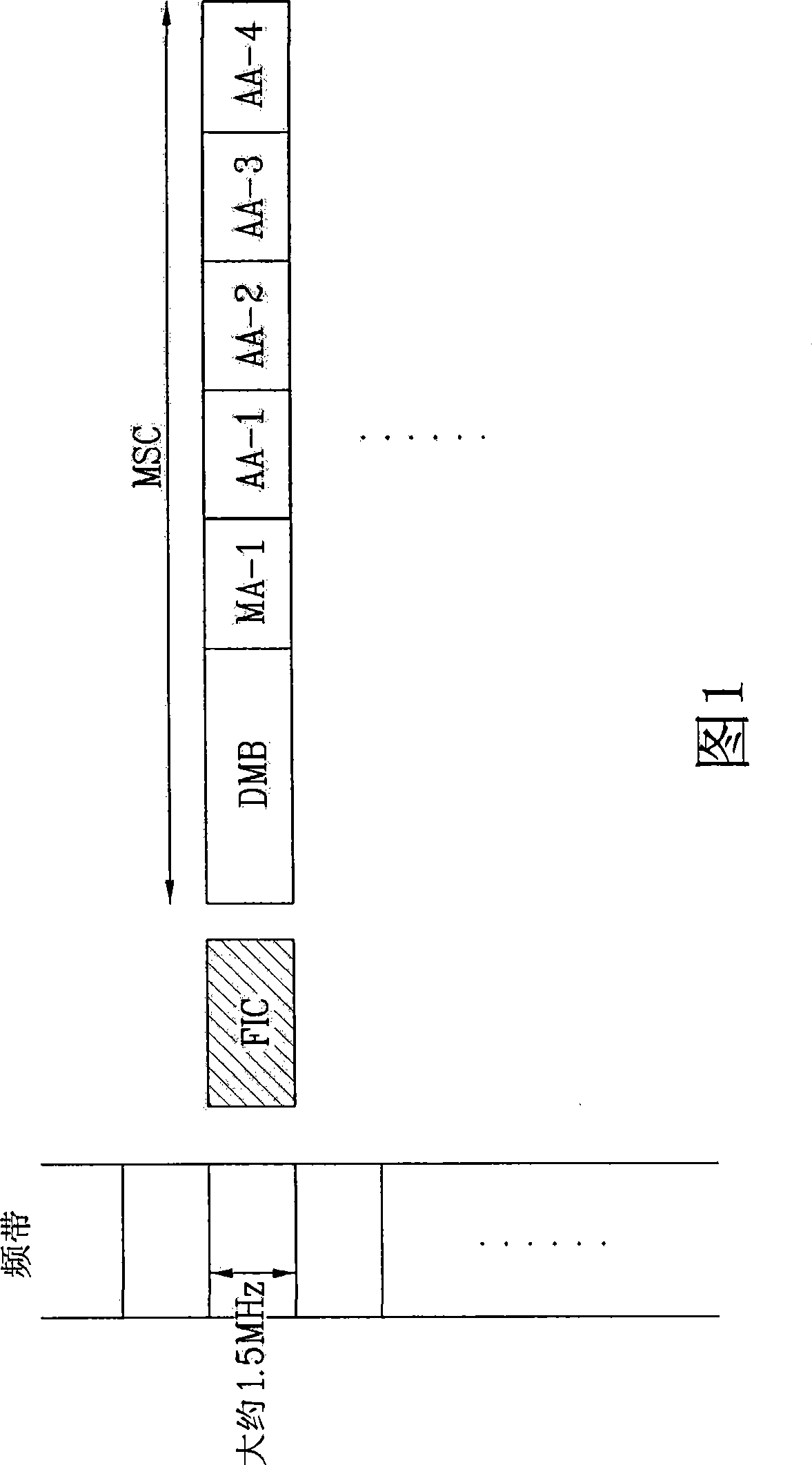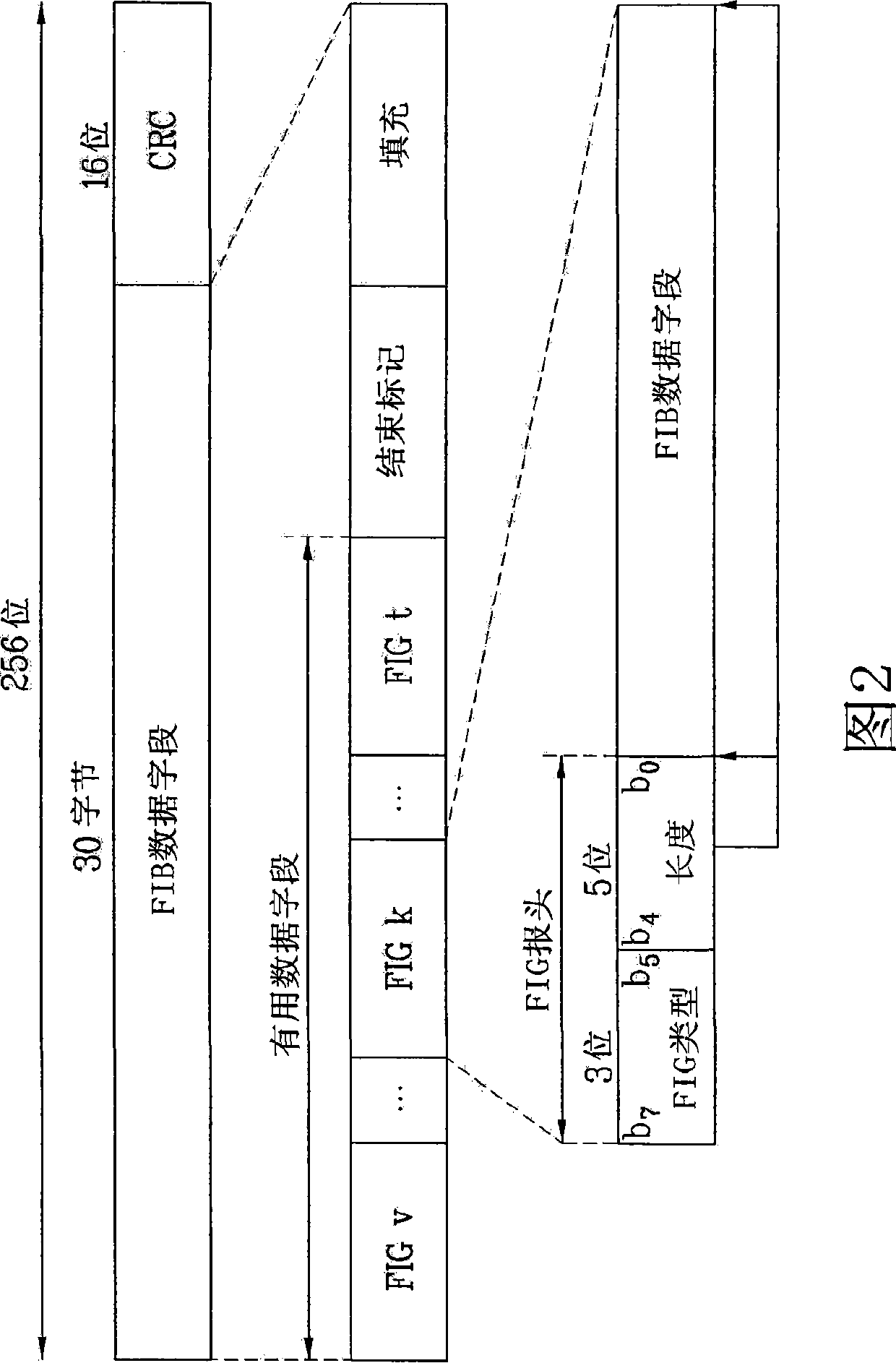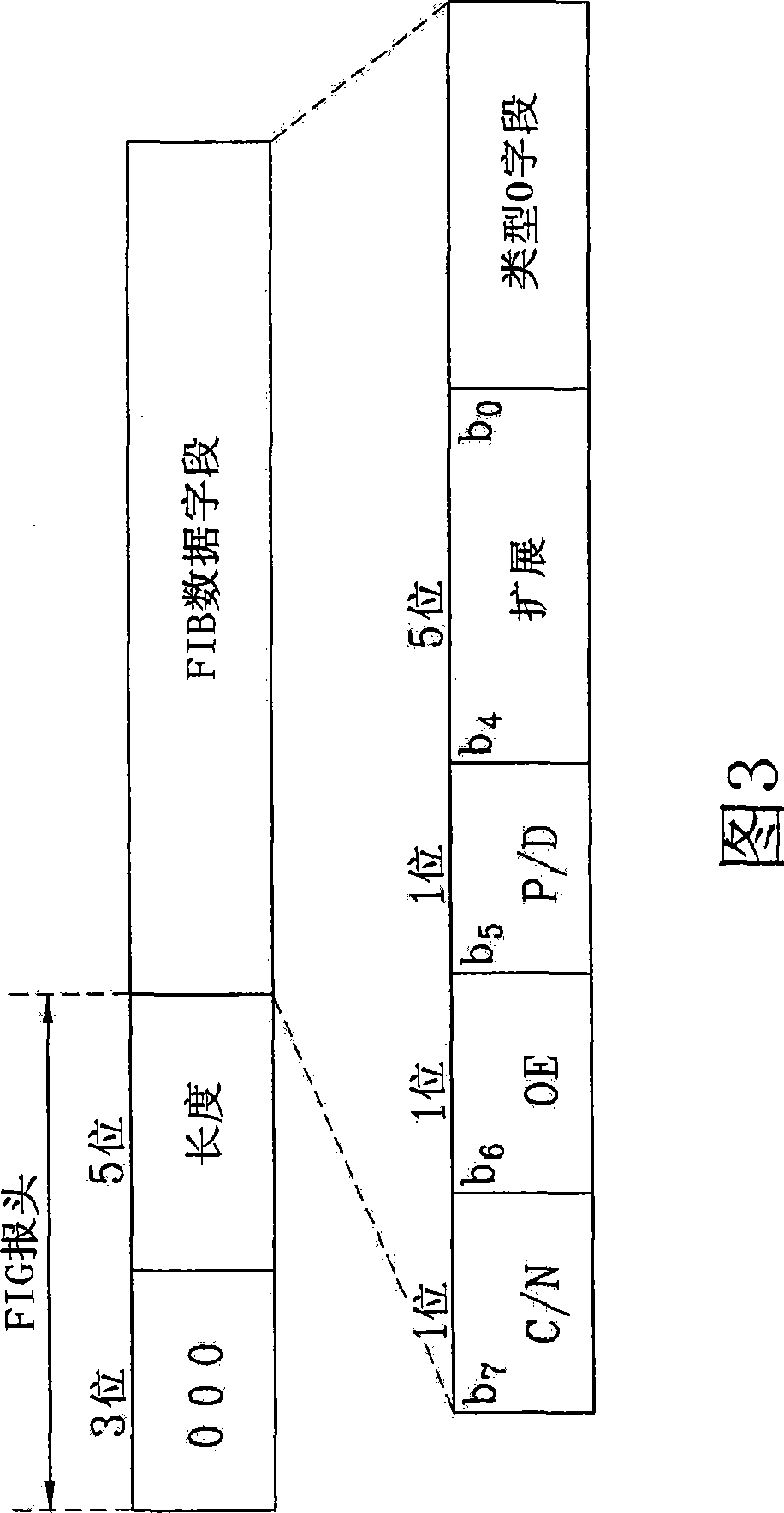Method of transmitting and receiving digital broadcasting signal and reception system
A receiving system and encoding method technology, applied in the field of digital broadcasting, can solve the problems of unable to output audio signals, small number of audio services, low compression ratio, etc., and achieve the effect of improving data transmission efficiency
- Summary
- Abstract
- Description
- Claims
- Application Information
AI Technical Summary
Problems solved by technology
Method used
Image
Examples
no. 1 example
[0047] FIG. 1 is a view schematically showing an FIC and an MSC of a digital broadcast signal according to an embodiment of the present invention.
[0048] Hereinafter, a method of delivering more audio services in an MSC will be schematically described with reference to FIG. 1 . The implementation method according to the present invention can be understood through the second to sixth embodiments.
[0049] As shown in Figure 1, in the present invention, audio services compressed using the Masked Adaptive Universal Subband Integrated Coding and Multiplexing (MUSICAM) audio coding method and some audio compressed using alternative audio coding methods can be transmitted in the MSC Serve.
[0050] For convenience of description, in the present invention, an audio service compressed using the MUSICAM audio encoding method is referred to as MUSICAM audio (MA), and an audio service compressed using an alternative audio encoding method is referred to as alternative audio (AA).
[0...
no. 2 example
[0061] FIG. 2 is a view showing the structure of a fast information block (FIB) of digital broadcasting.
[0062] FIG. 3 is a view showing the structure of a Fast Information Group (FIG) in the FIB.
[0063] FIG. 4 is a view showing service organization when the FIG type is 0 and the extension field is 2. Referring to FIG.
[0064] Hereinafter, concepts of FIC, FIB, and FIG will be briefly described with reference to FIGS. 2 to 4 (together with FIG. 1 ).
[0065] FIC includes FIB.
[0066] As shown in FIG. 2, the FIB has 256 bits and includes a FIB data field and a cyclic redundancy check (CRC).
[0067] The FIB data field includes one or more of FIG, end marker and padding.
[0068] Each FIG includes a FIG header and a FIG data field, and the FIG header includes a FIG type and a length.
[0069] When the FIG type is 0, the FIG application can indicate information on MCI and SI.
[0070] When the FIG type is 0, the FIG data fields include a current / next (C / N) field, an ot...
no. 3 example
[0091] According to one embodiment of the present invention, the alternative coding information of the currently transmitted audio service component is defined in the ASCTy field. The ASCTy field is passed to the FIC of the transport frame and the actual audio traffic component is passed to the MSC.
[0092] That is, an alternative audio coding method of an audio service component transmitted through the MSC can be confirmed using a value assigned to the ASCTy field.
[0093] The ASCTy field indicates a value for identifying an audio service component encoded using the MUSICAM audio encoding method or another encoding method.
[0094] Accordingly, a broadcast receiver can decode audio service components compressed and transmitted using various encoding methods by parsing the ASCTy field.
[0095] FIG. 5 is a view showing a value of an ASCTy field according to an embodiment of the present invention.
[0096] FIG. 6 is a view showing values of ASCTy according to another embo...
PUM
 Login to View More
Login to View More Abstract
Description
Claims
Application Information
 Login to View More
Login to View More - R&D
- Intellectual Property
- Life Sciences
- Materials
- Tech Scout
- Unparalleled Data Quality
- Higher Quality Content
- 60% Fewer Hallucinations
Browse by: Latest US Patents, China's latest patents, Technical Efficacy Thesaurus, Application Domain, Technology Topic, Popular Technical Reports.
© 2025 PatSnap. All rights reserved.Legal|Privacy policy|Modern Slavery Act Transparency Statement|Sitemap|About US| Contact US: help@patsnap.com



